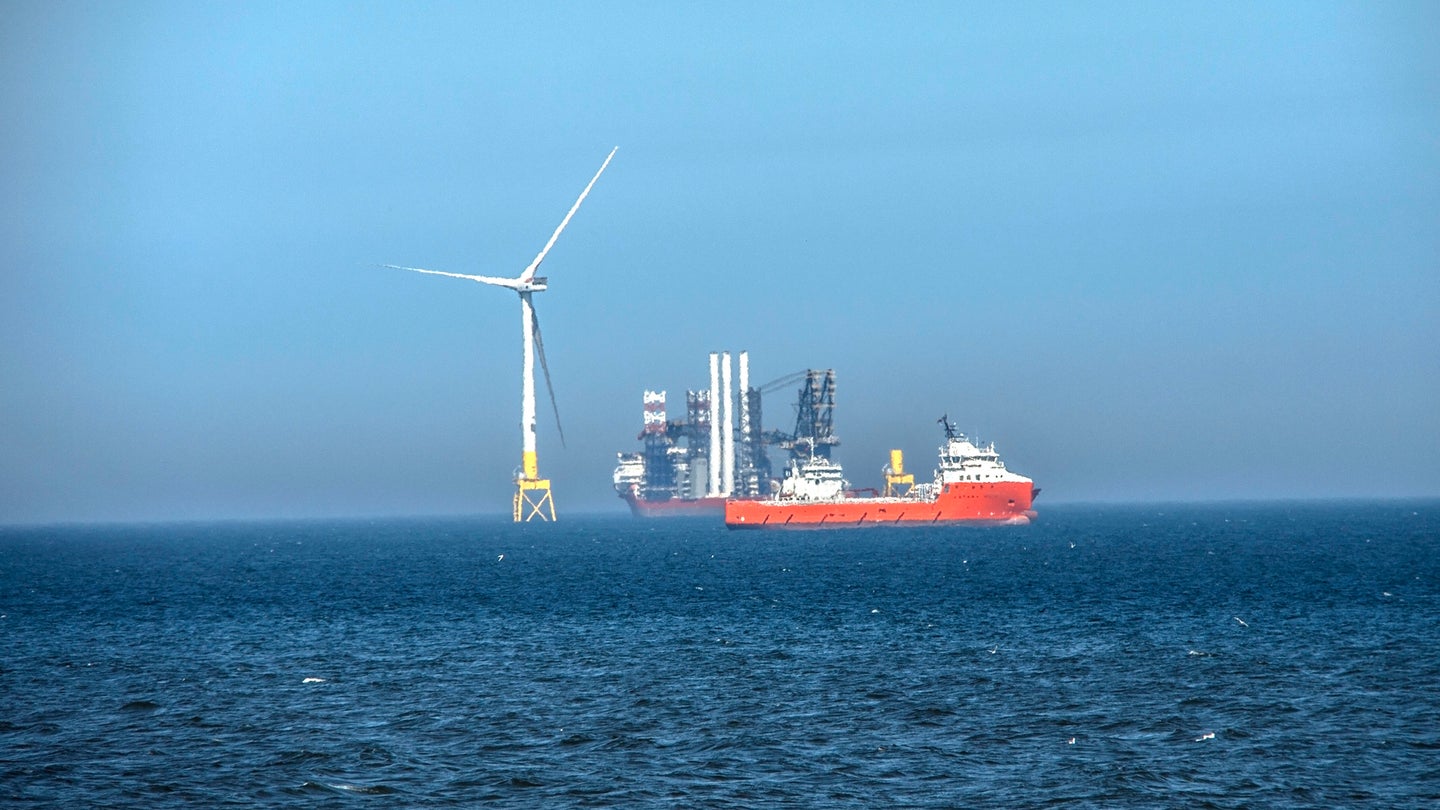A Danish company just scrapped its ambitious plan for a New Jersey offshore wind farm
Ørsted cancelled Ocean Wind I and II, but still has plans in Rhode Island.

The wind energy company Ørsted has officially shuttered plans for two New Jersey offshore wind farms, citing rising inflation, interest rates, and supply chain problems. The blow to US green energy infrastructure arrives less than two weeks after the Danish wind industry giant promised to pay the Garden State a $100 million penalty if its Ocean Wind I turbines weren’t online by the end of 2025. But although the company’s plans off the coast of Atlantic City are canceled, similar projects are still underway across the US as the country transitions towards a sustainable energy infrastructure.
“We are extremely disappointed to have to take this decision, particularly because New Jersey is poised to be a US and global hub for offshore wind energy,” David Hardy, Ørsted Group EVP and CEO Americas, said in an October 31 statement. “I want to thank Governor Murphy and NJ state and local leaders who helped support these projects and continue to lead the region in developing American renewable energy and jobs.”
[Related: Atlantic City’s massive offshore wind farm project highlights the industry’s growing pains.]
According to the Associated Press on Tuesday, however, NJ Gov. Phil Murphy had strong words for the company, citing Ørsted’s recent statements “regarding the viability and progress of the Ocean Wind I project.”
“Today’s decision by Ørsted to abandon its commitments to New Jersey is outrageous and calls into question the company’s credibility and competence,” added Gov. Murphy per the AP. He also hinted at impending plans to pursue an additional $200 million Ørsted reportedly pledged for the state’s offshore wind industry. In the meantime, Gov. Murphy reiterated New Jersey’s commitment to offshore wind infrastructure, and said the state will solicit a new round of project proposals in the near future.
Both Ocean Wind endeavors had faced intense scrutiny and pushback from both Republican state legislators and locals, who criticized the farms’ alleged ecological impacts, ocean horizon views, as well as the millions of dollars in subsidies granted to Ørsted. Earlier this month, Ørsted received a lawsuit filed on behalf of an environmental group called Clean Ocean Action alongside multiple seafood and fishing organizations. In May 2023, the Bureau of Ocean Energy Management released an over 2,300 page Final Environmental Impact Statement on Ocean Wind 1, which deemed it responsibly designed and safe for the region’s ecological health.
If completed, Ocean Wind I would have included nearly 100 giant turbines roughly 15 miles off the southeast coast of Atlantic City, New Jersey. Once online, the farm would have annually generated 1.1 gigawatts of energy—enough to power over 500,000 homes. Ocean Wind II was slated for construction next to its sibling wind farm, and would have offered similar energy outputs.
[Related: Watch a heavy-lifting drone land a perfect delivery on an offshore wind turbine.]
While the Danish company’s plans in New Jersey are dashed, America’s wind farm buildup is still progressing elsewhere—and Ørsted remains a part of that trajectory. The same day as its Ocean Wind announcement, the company confirmed it is moving forward with a $4 billion project, Revolution Wind, off the coast of Rhode Island. If completed, the offshore wind farm will supply clean energy for residents in both Rhode Island and Connecticut.
Meanwhile, a utility company called Dominion Energy received crucial federal approval on Tuesday for plans to construct 176 turbines over 20 miles off the coast of Virginia. Dominion claims the project is the largest offshore project in the US, and will generate enough energy for nearly 660,000 homes upon its estimated late-2026 completion date. According to a 2015 report from the US Department of Energy, wind farms could supply over a third of US electricity by 2050.
